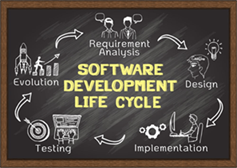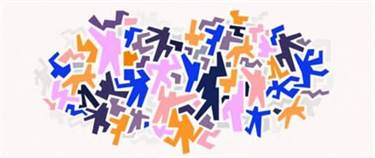Difference Between Cloud Computing And Fog Computing 22 marzo, 2021 – Posted in: Software development
Содержание
Cloud, Fog, and Edge computing technologies have irreplaceable solutions to many IoT challenges. Companies know how to implement cloud, fog, and edge technologies to support their needs. Workload should be categorized into monitoring, analyzing, and execution. Edge computing stores data locally and only send some of the data to the cloud. Without Edge computing, the data from IoT devices have to be sent back and forth to the cloud, resulting in slower response time and less efficiency. Improve processes and reduce costs by analyzing the data you’ve acquired.
In smart buildings, IoT devices install to streamline the building maintenance activities. Smart sensors can be used to automate the processes such as security entrance, car park operations, energy usage etc. With fog computing, data collects from IoT devices can be processed and analysed in fog nodes placed in building environment, rather than transmits to the cloud.
- Since fog is an additional layer within the IIoT architecture, edge computing can work without fog computing.
- It can’t replace cloud computing data because cloud computing is a centralized process that is the need for some time.
- The main goal is to provide basic analytic services at the edge of the network.
- The Crosser Platform enables real-time processing of streaming, event-driven or batch data for Industrial IoT and Intelligent Workflows.
- Fog computing provides a better way than cloud solutions do when it comes to collecting and processing data from these devices.
- This term, fog, has a connection with the real world weather phenomenon, a cloud formed close to the ground.
Handle all edge computing and data communication needs in the same compact, industrially hardened controller that runs your system. He has worked with web and communication in Sweden and internationally since 1999. Since 2012, Johan has been focusing on real-time communication, and the business and operational benefits that comes with analyzing streaming data close to the data sources. Well, that is going to depend on the specific needs of each company. The increasing availability of low-cost Internet of Things sensors, Edge devices, and Cloud analytics software means that there are options to suit every size and structure of businesses.
Fog computing is a type of distributed computing that connects a cloud to a number of “peripheral” devices. (The term “fog” refers to the edge or perimeter of a cloud.) Rather than sending all of this data to cloud-based servers to be processed, many of these devices will create large amounts of raw data . Fog Computing networks can create low-latency connections between devices and analytics endpoints. This reduces the amount of bandwidth needed compared to sending the data back to a server room or data center in the Cloud for processing.
One specific route in which industries are hoping to accomplish this is by investing in newer technology, updating software, and advancing their security programs. With all the changes in the technological field, cybersecurity is a necessity that is getting harder and harder to ignore. For the technology industry, hybrid cloud computing and fog computing are two of the better known solutions protecting against cyber attacks. This also includes servers, storage, databases, software, networking over the internet. Cloud computing also offers you flexible resources and faster innovation. This also helps to lower your operating costs as you will be paying only for the cloud services you use.
Types Of Cloud Computing
The main goal is to provide basic analytic services at the edge of the network. This also improves performance and overall network efficiency due to less distance across the network. The devices which extend the cloud closer to the source of data are called fog nodes.
Cloud Computing Vs Fog Computing: Let’s Explore the Difference – Analytics Insight
Cloud Computing Vs Fog Computing: Let’s Explore the Difference.
Posted: Sun, 13 Feb 2022 08:00:00 GMT [source]
In turn, cloud computing services providers can benefit from significant economies of scale by delivering the same services to a wide range of customers. We can avoid the complexity of owning and maintaining infrastructure by using cloud computing services and pay for what we use. The benefits being that it removes the need to own and maintain your own IT infrastructure, and the scalability of Cloud data storage is limitless. Also, the ability to extend the reach of your data to anyone with network access, anywhere, allows you to make improved insight-driven business decisions, faster.
The Rugged Edge Media Hub
During 2015 Microsoft, Cisco, Intel and a couple of other enterprises were gathered in a joint consortium to push for the idea of Fog Computing, called Open Fog Consortium. The consortium merged withIndustrial Internet Consortiumin 2018 as there was a significant overlap between the two groups. Data management becomes laborious because, in addition to storing and computing data, data transfer requires encryption and decryption, which releases data. The OpenFog Consortium is formed by a group of high tech companies and academic institutions including Cisco, Intel, Microsoft, Dell, ARM and Princeton University in 2015, to standardize the fog computing. Based on the data and application, there are three types of cloud computing.
It enhances security since the data does not travel over a network. Data is distributed so the local data might remain safe if the data center gets compromised. Edge computing reduces network cost and transmission delay to provide better control over sensitive data movements.
Opto 22’s groov EPIC edge programmable industrial controller can help you do all these things and more. Monitor and maintain machines at isolated locations and customer sites. First the electrical signals from things are traditionally wired to the I/O points of an automation controller . The automation controller executes a control system program to automate the things.
Edge Computing In Iot
Fog computing offloads the computation task from the cloud down to the local area network . Therefore, fog computing can enable intelligent applications to run at the edge in real-time by bringing powerful computing at the edge. However, by implementing fog vs cloud computing an additional layer between the cloud and the edge, fog computing is adding complexity to the IoT network architecture. Cloud computing solutions have the ability to increase speed and agility as it makes resources available to developers.

In fog computing, transporting data from things to the cloud requires many steps. Crosser designs and develops Streaming Analytics, Automation and Integration software for any Edge, On-premise or Cloud. The Crosser Platform enables real-time processing of streaming, event-driven or batch data for Industrial IoT and Intelligent Workflows.
Ai Edge Inference Computer
Expert in architecting and implementing cloud-based infrastructure solutions. A hybrid cloud gives more flexibility by allowing data and application sharability between private and public cloud. Augmented reality and virtual reality applications also benefit from lower response times. Edge computing simplifies this communication chain and reduces potential points of failure.

DPU accelerated server combines the latest CPUs, GPUs, DPUs, and FPGAs for performance-driven scale-out architecture on the fog layer. With DPU on the fog layer, the host server can free up its precious CPU resources by offloading some processes to the DPUs. The host server then can allocate its CPU resources to other mission-critical applications.
It makes computation, storage, and networking services more accessible between end devices and computing data centers. Cisco’s, Product line manager, Ginny Nichols has originally coined the term fog computing. This term, fog, has a connection with the real world weather phenomenon, a cloud formed close to the ground.
Fog Computing Explained
Edge computing saves time and money by streamlining IoT communication, reducing system and network architecture complexity, and decreasing the number of potential failure points in an IoT application. Reducing system architecture complexity is key to the success of IIoT applications. Fog computing is required for devices that are subjected to demanding calculations and processing. But unlike Edge Computing, Fog Computing architectures stretch beyond the Cloud to where data is eventually stored and can be analysed, such as in the Cloud or a data centre. With the combination of the ability to run applications at the Edge and the capacity of the Cloud, Fog computing can act as a bridge, bringing together the Cloud and the Edge.

Edge computing device stays closer to the source of data, such as IoT devices. As edge computing moves the computing services like storage and servers closer to end-user or source of data, data processing becomes much faster with lower latency and also saves bandwidth. FlacheStreams DPU server is an accelerated rackmount server designed to provide high-performance computing on the fog layer. This server is purpose-built for complex data center workloads on public, private, and hybrid cloud models.
Are able to accelerate app development, test new and old applications in the cloud faster, and enable consistent developments across a spectrum of clouds. Cloud management solutions can help optimize every aspect of public, private, and hybrid clouds. Fog computing analyses the data at the network edge, which is time-sensitive instead of sending the IoT data to the cloud.
We talk about the impact of cloud computing and fog computing on healthcare big data. Cloud base framework for Homediagnosis Service, Fog computing architecture and the justification of moving from cloud to Fog presented comprehensively in this paper. Premio is a global solutions provider that has been designing and manufacturing top-notch industrial computers for over 30 years in the United States. Our solutions are designed to operate reliably and optimally in the most challenging environmental conditions. Premio provides expertise in designing, engineering, and manufacturing of ruggedized edge computers and server hardware for key enterprise markets. In addition, Premio offers a variety of industrial edge computers and high-performance DPU servers for IIoT applications.
For instance, most of the smart device operations depend on the connectivity with cloud systems. All your contact details, images, documents, music will be transferred to the cloud as soon as they generated. Cloud computing has a great impact on both individuals and businesses. As a https://globalcloudteam.com/ key benefit of cloud on businesses, it eliminates the in-house data storage and by that, it helps to decrease the storage and operational cost. Though the cloud computing provides comprehensive data management facilities to the businesses, it also has some major downsides as well.
Is Edge Computing Better Than Cloud Computing?
It is the only platform of its kind that is purpose-built for Industrial and Asset Rich organizations. The Edge Analytics software is typically deployed on an IoT gateway and processes the sensor data from multiple field units. The Edge Analytics software is deployed on an IoT gateway on a remote unit, or embedded, and processes the sensor data from that single unit. The metaphorfogoriginates from the idea of a cloud closer to the ground.
